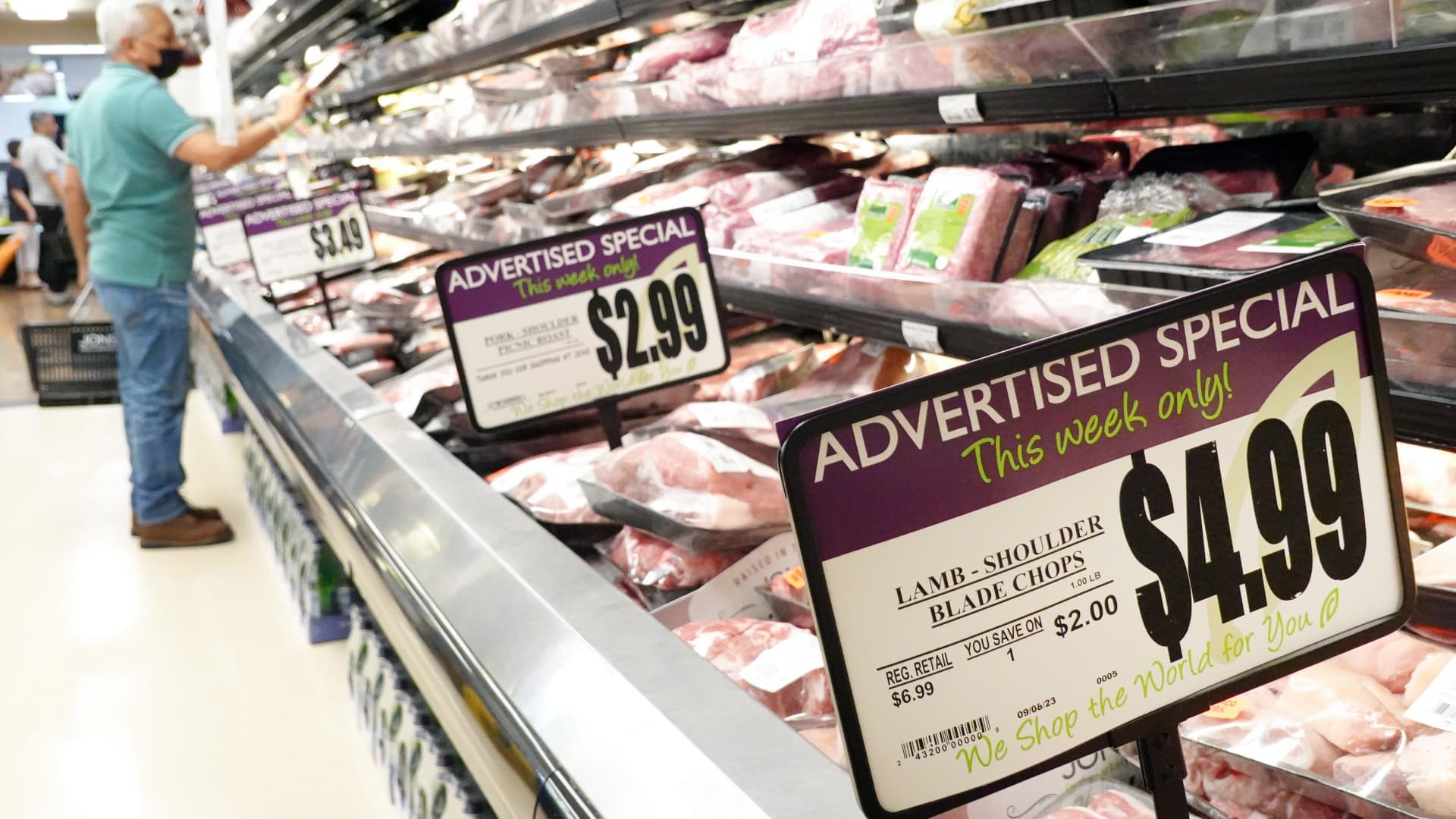Mario Tama | Getty Images
Inflation was unchanged in September, but price pressures seem poised to continue their broad and gradual easing in coming months, according to economists.
In September, the consumer price index increased 3.7% from 12 months earlier, the same rate as in August, the U.S. Bureau of Labor Statistics said Thursday.
The latest reading is a significant improvement on the Covid pandemic-era peak of 9.1% in June 2022 — the highest rate since November 1981.
“The speed of the decline is always going to be uncertain,” said Andrew Hunter, deputy chief U.S. economist at Capital Economics. “But anywhere you look, [data] suggests inflation should be falling rather than rising.”
The CPI is a key barometer of inflation, measuring how quickly the prices of anything from fruits and vegetables to haircuts and concert tickets are changing across the U.S. economy.
Despite recent improvements, economists say it will take a while for inflation to return to normal, stable levels.
The Federal Reserve aims for a 2% annual inflation rate over the long term. Fed officials don’t expect that to happen until 2026.
“Ultimately, inflation is still the most menacing issue in the economy right now,” said Sarah House, senior economist at Wells Fargo Economics. “We’re edging our way back [to target], but there’s still quite a bit of ground to cover,” she added.
Gas prices still something consumers ‘contend with’
Gas prices were up 2.1% in September, on a monthly basis — a “major contributor” to inflation last month, the BLS said.
However, that’s a big improvement from August, when prices at the pump jumped 10.6% during the month largely due to dynamics in the market for crude oil, which is refined into gasoline.
More from Personal Finance:
Lawmakers target credit card rates, fees as debt tops $1 trillion
Treasury to make it easier to get $7,500 EV tax credit in 2024
77-year-old widow lost $661,000 in a common tech scam
“It’s still something consumers have to contend with, but not as big an increase as what households were having to deal with in August,” House said.
Prices have fallen in October, too. The average price per gallon was $3.68 as of Oct. 9, down 15 cents a gallon since Sept. 25, according to the Energy Information Administration.
Housing inflation continues to move downward
When assessing underlying inflation trends, economists generally like to look at a measure that strips out energy and food prices, which tend to be volatile from month to month.
This pared-down measure — known as the “core” CPI — fell to an annual rate of 4.1% in September from 4.3% in August.
Shelter — the average household’s biggest expense — has accounted for more than 70% of that total increase in the core CPI over the past year. Housing inflation increased in September, to its highest monthly rate since May.
However, the housing-price trend “remains firmly downward,” and should continue to slow through roughly summer next year, House said.
“That will be an important source of the overall rate of disinflation as we move through 2024,” she said.
Other categories with “notable” increases in the past year include motor vehicle insurance (up 18.9%), recreation (up 3.9%), personal care (up 6.1%) and new vehicles (up 2.5%), the BLS said.
Why inflation is returning to normal
At a high level, inflationary pressures — which have been felt globally — are due to an imbalance between supply and demand.
Energy prices spiked in early 2022 after Russia invaded Ukraine. Supply chains were snarled when the U.S. economy restarted during the Covid-19 pandemic, driving up prices for goods. Consumers, flush with cash from government stimulus and staying home for a year, spent liberally. Wages grew at their fastest pace in decades, pushing up business’ costs.
Now, those pressures have largely eased, economists said.
Plus, the Federal Reserve has raised interest rates to their highest level since the early 2000s to cool the economy. This tool aims to make it more expensive for consumers and businesses to borrow, and therefore rein in inflation.
Average wage growth also declined to 4.4% in September, from a peak 9.3% in January 2022, according to Indeed data.
“Most of the evidence suggests the economy is still strong, but maybe cooling a bit,” Hunter said. “Labor market conditions are continuing to gradually cool as well.”
That said, there are a few potential sources of upward pressure on inflation, economists said. For example, the Israel-Hamas war has the potential to nudge up global energy prices. United Auto Workers strikes could elevate prices for cars if inventory declines.
